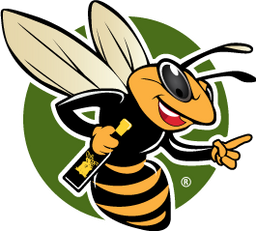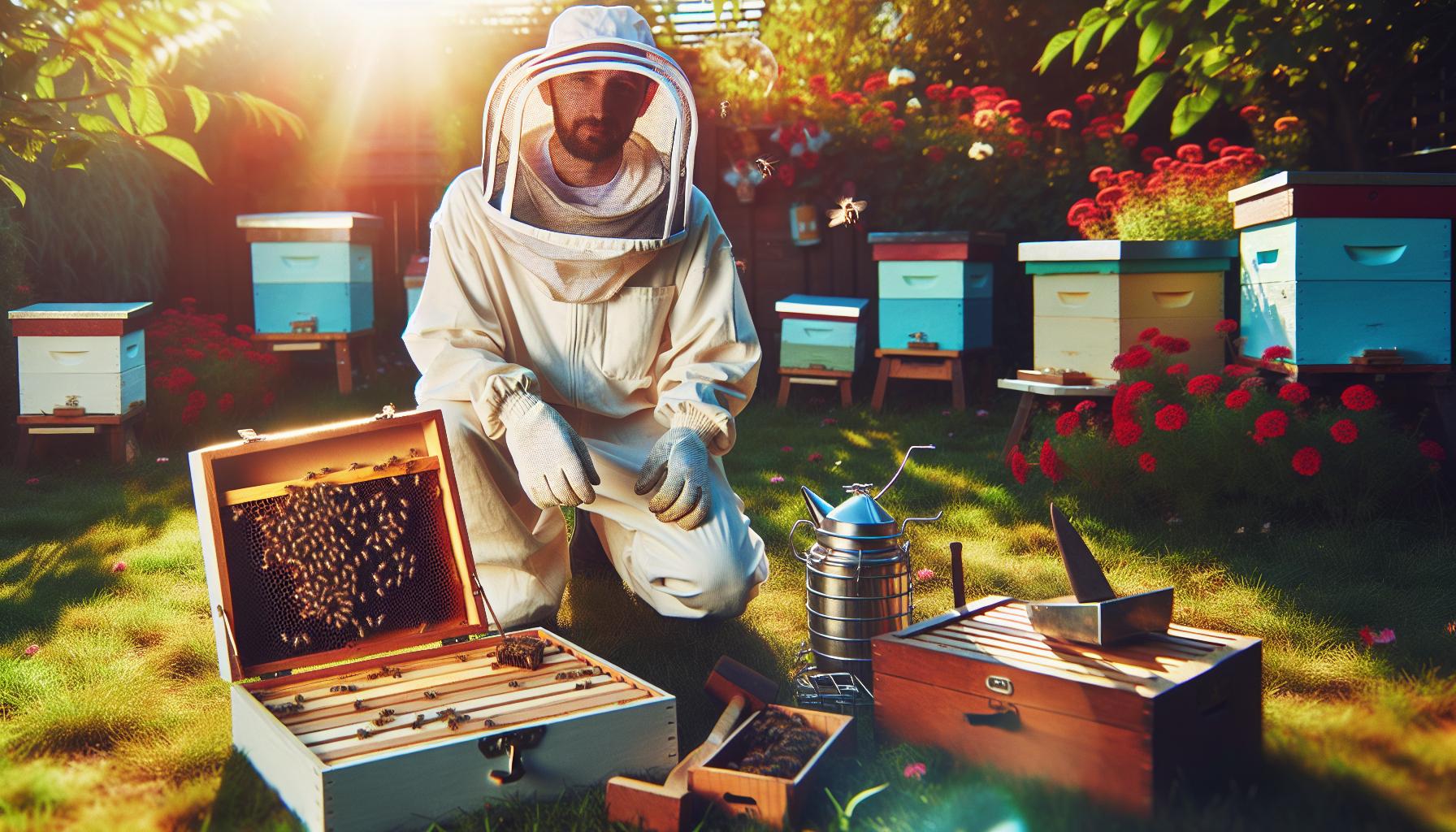If you're diving into the rewarding world of beekeeping, having the right tools at your fingertips can make all the difference. A well-equipped beekeeper's toolbox not only enhances your efficiency but also ensures the health and productivity of your hives. From essential gear to specialized instruments, knowing what to include can set you up for success.
Essential Tools For Beekeepers
Equipping yourself with essential tools ensures effective beekeeping practices. Here are the most critical items to include in your beekeeping toolbox.
Hive Tools
Hive tools are vital for maintaining beehives. A hive tool allows you to pry apart frames and boxes. Use it to scrape off propolis and wax from surfaces. Frame grips prevent damage to the frames while enabling easier handling. Smokers calm bees, helping you inspect hives without causing stress to the colony. Bee brushes provide a gentle way to remove bees from frames during inspections. Always keep your hive tools clean to avoid spreading disease among colonies.
Protective Gear
Protective gear is crucial for your safety during inspections. A bee suit covers your entire body, minimizing stings. Choose a suit with a fitted hood to protect your face and neck. Gloves are essential for hand protection; go for long gloves for extra coverage. Veils shield your face while allowing you to see clearly. Boots keep your feet safe and dry in case of moisture around the hives. Always inspect your gear for wear and tear to ensure full protection.
Honey Extracting Equipment
Honey extracting equipment makes the process efficient and clean. An extractor allows you to spin honey from frames without damaging them. Ensure you choose an extractor that fits your scale of beekeeping, ranging from manual to electric models. Honey filters remove impurities from your harvest. Buckets with lids store honey securely during extraction. A refractometer checks honey moisture levels to ensure quality. Using this equipment results in a delicious product while simplifying the extraction process.
Creating Your Beekeepers Toolbox
Creating an effective beekeepers toolbox requires selecting tools that enhance your beekeeping experience. Each tool's purpose plays a significant role in maintaining hive health and ensuring smooth operations.
Choosing The Right Toolbox
Choose a toolbox that provides adequate space and organization for all necessary tools. Consider materials that resist wear and tear, as outdoor conditions can be challenging. A sturdy plastic or metal toolbox works well, offering durability against weather changes.
Select a size that accommodates essential equipment without excessive room for clutter. Look for compartments or organizers that keep items accessible and easy to find during hive inspections.
Include options for portability. If moving around your yard or to other locations, you benefit from a toolbox with a handle or wheels for easy transport.
Evaluate features like waterproofing or compartments specifically designed for small items like hive tools or gloves. These features prevent damage and help maintain order.
Prioritize strength, size, and portability when choosing your beekeepers toolbox to foster a productive beekeeping process.
Organizing Your Tools
Organizing your beekeeping tools fosters efficiency and ease during hive management. A structured toolbox plays a critical role in ensuring quick access to essential items.
Tool Placement
Place frequently used tools within easy reach to save time during inspections. Position hive tools like frame grips and smokers at the top for immediate access. Set less commonly used tools such as additional supers or comb guides toward the bottom or back of the toolbox. Ensure that protective gear, including suits and gloves, occupies a designated space, separate from other tools, to maintain cleanliness. Keep honey extracting equipment organized as well; use separate compartments for extractors, filters, and jars to avoid cross-contamination. Assess tool placement regularly and adjust based on usage patterns to promote efficiency. Aligning your tools logically enhances workflow and decreases frustrations during hive maintenance.
Using Dividers
Using dividers within your toolbox enhances organization and access to tools. Consider utilizing plastic or cardboard dividers to separate different types of tools, such as hive tools, protective gear, and honey harvesting equipment. Each category should have its section, making it easy to locate specific items quickly. Adjustable dividers allow for customization according to your needs, accommodating tools of varying sizes. Designate each section with labels for simple identification, reducing the time spent searching for items. Dividers prevent items from shifting during transport, thus protecting tools from damage while ensuring everything remains in its place. Organized tools promote a smoother beekeeping experience and support an effective maintenance routine.
Maintenance Of Beekeepers Toolbox
Maintaining your beekeepers toolbox requires regular attention to ensure effectiveness and longevity.
Cleaning Your Tools
Cleaning your tools enhances performance and prolongs their life. Start by using a brush or cloth to remove debris, propolis, and wax from each tool. Disinfect your hive tools using a solution of one part bleach to nine parts water or a commercial beekeeper sanitizer. Immerse non-electronic tools in this solution for approximately five to ten minutes. Rinse thoroughly to eliminate any chemical residue. For wooden tools, avoid soaking. Instead, wipe them with a cloth dampened with the sanitizing solution. Regularly wash gloves and protective gear according to manufacturer instructions to maintain hygiene. Allow all tools to air dry completely before storing them back in your toolbox to prevent rust or mold. Establish a cleaning schedule after every honey harvest or hive inspection to ensure optimal tool condition.
Inspecting For Wear And Tear
Inspecting your tools for wear and tear maintains safety and efficiency. Regularly check hive tools for rust, cracks, or splinters. Look closely at wearable parts like gloves and bee suits for any holes or damage. Also, inspect smokers for clogged nozzles and ensure the bellows function correctly. If you identify damaged tools, repair or replace them immediately to prevent potential accidents during hive management. Examine your toolbox for loose hinges or latches to ensure secure closure and transport. Schedule inspections every season and after heavy use to maintain tool integrity. Prioritize addressing any issues promptly, ensuring your beekeeping experience remains uninterrupted due to faulty equipment.
Troubleshooting Common Issues
Troubleshooting common issues can help enhance your beekeeping experience. Addressing challenges promptly ensures hive health and productivity.
Missing Tools
Identify missing tools promptly to avoid disruptions during hive management. Regular inventory checks assist in tracking your equipment. Create a simple checklist of essential items, such as hive tools, smokers, and protective gear. If you notice that a tool is missing, search common locations where it might have been misplaced. Examine your toolbox and surrounding areas for overlooked items. Encourage team communication, as lost tools may still be in use by fellow beekeepers. Keep a spare set of critical tools in your toolbox for immediate access during emergencies. Develop a habit of returning tools to their designated spaces after each use. Performing these steps can minimize the impact of missing equipment and maintain effective hive maintenance.
Damaged Equipment
Address damaged equipment swiftly to maintain safety and efficiency in beekeeping. Inspect tools regularly, particularly after each honey harvest or hive inspection. Look for signs of wear, such as rust on metal tools or tears in protective gear. Repair minor damage with suitable adhesives or replacement parts when possible. For significant issues, prioritize replacing the damaged item to ensure proper function. Store tools in a dry, protected area to minimize further deterioration. Regular maintenance extends the life of your beekeeping equipment and ensures smooth operations. A proactive approach to tool care can prevent interruptions during important hive activities.
Helpful Tips For Beekeepers
Maintaining an effective beekeeping toolbox involves careful consideration of tool customization and seasonal adjustments. Implement these tips to enhance your beekeeping experience.
Customizing Your Toolbox
Customize your toolbox to fit your specific beekeeping needs. Assess the tools you use most frequently and arrange them for convenient access. Consider adding extra compartments for specialty tools like queen marking pens and mite treatment applicators. Use labels to clearly identify each tool's location, ensuring swift retrieval during hive inspections.
Choose a toolbox size that matches your operation, allowing enough space for current tools as well as future additions. Select durable materials that withstand outdoor conditions, such as plastic or metal. If you use certain tools more often, keep them at the top or in front of the toolbox for quick access. This setup minimizes time spent rummaging through tools, maximizing efficiency when managing your bees.
Seasonal Tool Adjustments
Adjust your toolbox tools based on seasonal changes. In colder months, include insulation materials or wrapping tools that help protect hives from extreme weather. Add monitoring tools to track hive activity, especially during spring when bees become more active. In preparation for honey harvest, gather honey extraction equipment like extractors and filters to simplify the collection process.
When summer arrives, switch to tools for removing excess honey and managing bee populations. Keep treatments for pests or diseases on hand as temperatures rise, ensuring your bees remain healthy. Conduct a seasonal review of your toolbox, removing tools that are no longer needed and replacing them with items specific to the current season's demands. This practice ensures your toolbox is always ready to support effective beekeeping throughout the year.
Conclusion
Having the right tools in your beekeeping toolbox is essential for a successful and enjoyable experience. By investing in quality gear and maintaining organization you'll enhance your efficiency and ensure the health of your hives. Regular maintenance and thoughtful customization can make a significant difference in your workflow.
As you continue your beekeeping journey remember to assess your toolbox regularly. This practice not only keeps your tools in top shape but also prepares you for any challenges that may arise. With the right preparation and tools at your disposal you’ll be well-equipped to nurture your bees and enjoy the rewards of beekeeping.
Frequently Asked Questions
Why is having the right tools important for beekeeping?
Having the right tools is essential for effective hive management, ensuring the health of bees, and maximizing honey production. A well-equipped toolbox improves efficiency and helps beekeepers perform tasks safely and effectively.
What are the essential tools for a beekeeping toolbox?
Essential tools include hive tools (like frame grips and smokers), protective gear (such as bee suits and gloves), and honey extracting equipment (like extractors and filters). These tools enhance the beekeeping experience and ensure successful hive management.
How should I organize my beekeeping toolbox?
Organize your toolbox by placing frequently used tools within easy reach and designating spaces for protective gear. Use dividers to keep tools separated, allowing for quick access and preventing damage during transport.
How often should I maintain my beekeeping tools?
Regular maintenance is crucial. Clean tools after every honey harvest or hive inspection and inspect them for signs of wear and tear. Promptly repair or replace damaged items to ensure safety and efficiency.
What should I do if I lose a tool?
Conduct regular inventory checks to identify missing tools and maintain a checklist of essential items. Check common locations where items might be misplaced, and communicate with team members to locate them quickly.
Can I customize my beekeeping toolbox?
Yes, customizing your toolbox is recommended. Assess your frequently used tools and arrange them for convenient access. You can also add compartments for specialty tools and use labels for easy identification.
How do seasonal changes affect my toolbox needs?
Seasonal adjustments can improve your toolbox effectiveness. In colder months, consider adding insulation materials. Regularly review your toolbox to ensure it fits the changing needs of your bees throughout the year.
Ready to build your perfect beekeeping toolbox?
Start today by gathering the essential tools and creating a system that works for you. Whether you’re a beginner or seasoned beekeeper, having the right equipment—organized and well-maintained—makes all the difference.
Explore top-rated tools and gear now and take your beekeeping to the next level!



